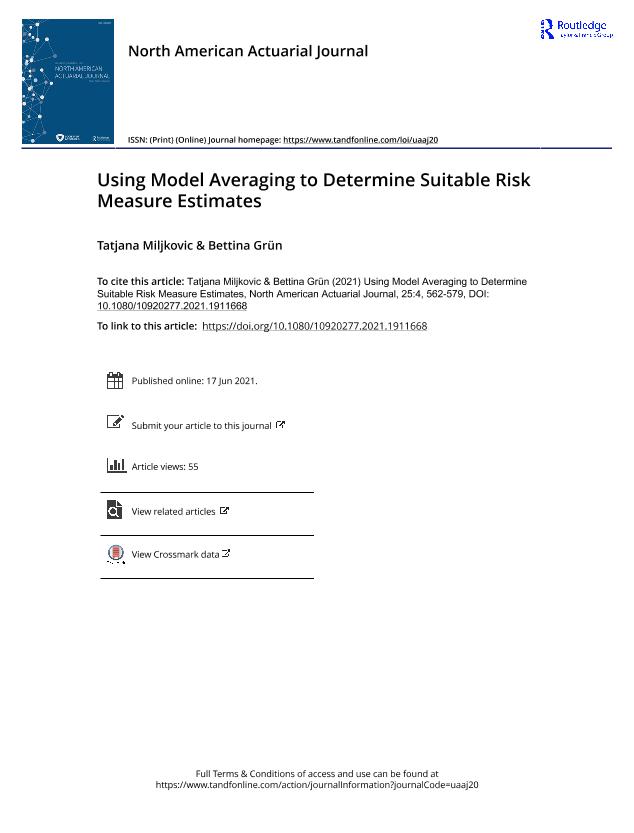Using Model Averaging to Determine Suitable Risk Measure Estimates

Contenido multimedia no disponible por derechos de autor o por acceso restringido. Contacte con la institución para más información.
| Tag | 1 | 2 | Value |
|---|---|---|---|
| LDR | 00000cab a2200000 4500 | ||
| 001 | MAP20220000925 | ||
| 003 | MAP | ||
| 005 | 20220117160150.0 | ||
| 008 | 220117e20211206esp|||p |0|||b|spa d | ||
| 040 | $aMAP$bspa$dMAP | ||
| 084 | $a6 | ||
| 100 | 1 | $0MAPA20190006392$aMiljkovic, Tatjana | |
| 245 | 1 | 0 | $aUsing Model Averaging to Determine Suitable Risk Measure Estimates$cTatjana Miljkovic, Bettina Grün |
| 520 | $aRecent research in loss modeling resulted in a growing number of classes of statistical models as well as additional models being proposed within each class. Empirical results indicate that a range of models within or between model classes perform similarly well, as measured by goodness-of-fit or information criteria, when fitted to the same data set. This leads to model uncertainty and makes model selection a challenging task. This problem is particularly virulent if the resulting risk measures vary greatly between and within the model classes. We propose an approach to estimate risk measures that accounts for model selection uncertainty based on model averaging. We exemplify the application of the approach considering the class of composite models. This application considers 196 different left-truncated composite models previously used in the literature for loss modeling and arrives at point estimates for the risk measures that take model uncertainty into account. A simulation study highlights the benefits of this approach. The data set on Norwegian fire losses is used to illustrate the proposed methodology. | ||
| 650 | 4 | $0MAPA20080586294$aMercado de seguros | |
| 700 | 1 | $0MAPA20220000291$aGrün, Bettina | |
| 773 | 0 | $wMAP20077000239$g06/12/2021 Tomo 25 Número 4 - 2021 , p. 562-579$x1092-0277$tNorth American actuarial journal$dSchaumburg : Society of Actuaries, 1997- |

